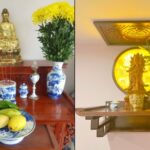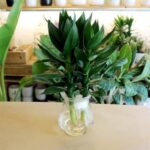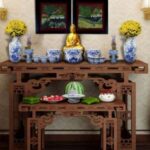The Money Tree
The Money Tree, or Lộc Vừng in Vietnamese, is a popular choice for those who follow Feng Shui principles. The name itself suggests prosperity and good fortune. This tree typically blooms from March to August annually, with its distinctive red flowers growing in long clusters that resemble strings of ruby-colored beads. The floral fragrance of the Money Tree is subtle yet pleasant, creating a soothing atmosphere.
In Feng Shui, the Money Tree is part of the “Three Lucks” trio, which includes the sung tree (representing fortune) and the van tuế tree (representing longevity). The character “lộc” in its name signifies wealth and abundance. Placing a Money Tree in front of your house is believed to bring good luck and a sense of peace and tranquility to the household.
The Money Tree features a lush canopy of leaves, and its flowers grow in clusters, symbolizing the harmony and unity of family members.
Apart from its aesthetic appeal, the Money Tree is believed to attract wealth and prosperity to your home.
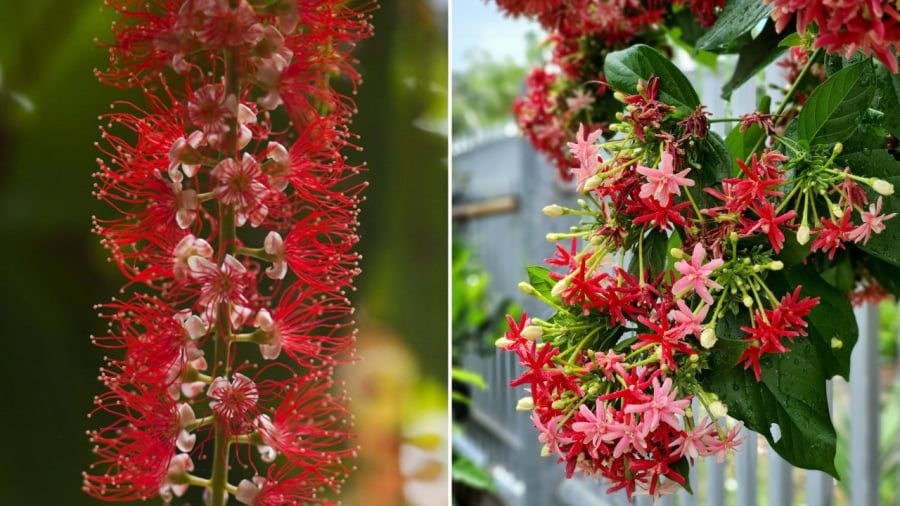
The Money Tree (left) and the Sử Quân Tử flower are believed to bring good luck. These flowers, when planted at the entrance of a house, are not just aesthetically pleasing but also auspicious.
The Sử Quân Tử Flower
The Sử Quân Tử flower, also known as the Temple Flame Tree, usually blooms from March to July. It exudes a delicate fragrance and captivates with its vibrant red hues. The flower’s soft, graceful appearance adds a touch of elegance to any space.
This flower is resilient and low-maintenance, adapting well to various environments.
The Creeping Thyme Flower
The Creeping Thyme flower, or Tường Vi in Vietnamese, is easy to cultivate and can be propagated through cuttings. It boasts a diverse range of colors, including red, pink, white, and purple. The delicate petals and vibrant colors of this flower add a touch of charm to any garden or living space.
As a sun-loving plant, it thrives when planted in areas with ample sunlight, making it ideal for the front of your house, yards, or any sunny spot.
In Feng Shui, the Creeping Thyme flower is believed to bring good luck to the household. Choosing a flower color that aligns with your Feng Shui element is thought to enhance this luck. For example, white flowers represent the Metal and Water elements, red symbolizes Fire and Wood, and pink represents Fire, Wood, and Earth.
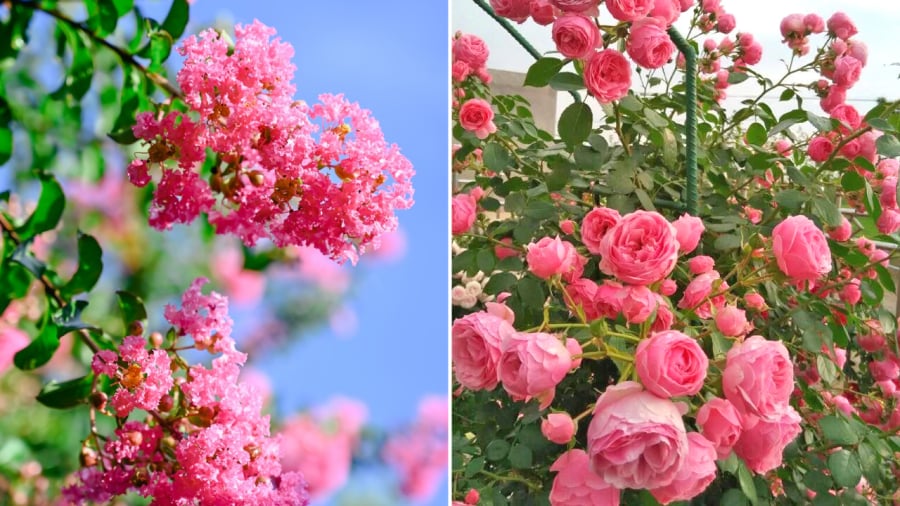
The Creeping Thyme flower (left) and the Climbing Rose create a beautiful entrance to your home while also bringing good Feng Shui energy.
The Climbing Rose
The Climbing Rose, with its vibrant colors, is an excellent choice for adding a romantic and vibrant touch to your home’s exterior. Planting this rose vine at your entrance or along your fence will instantly enhance the curb appeal of your home.
In Feng Shui, the Climbing Rose symbolizes love and happiness, infusing a warm and welcoming energy into your living space. Homeowners often plant this flower to attract positive energy and enhance the overall well-being of their family.
The Sống Đời Flower
The Sống Đời flower, also known as the Trường Sinh or Trường Thọ flower, is a resilient and low-maintenance plant. It blooms year-round with colorful flowers in shades of red, pink, and yellow. You can plant this flower in small pots to decorate your entrance, balcony, or any other space in need of a vibrant touch.
In Feng Shui, the Sống Đời flower symbolizes health, peace, and happiness. Additionally, its tendency to grow in clusters and spread rapidly represents fertility, family unity, and the prosperity of future generations.
This information is for reference only and is subject to individual interpretation.
2. Tulips: Tulips come in a wide range of colors and symbolize perfect love, warmth, and elegance. They are a beautiful addition to any front door and are known to bring a sense of peace and calm.
3. Sunflowers: With their large, vibrant blooms, sunflowers represent happiness, admiration, and longevity. They are sun-loving flowers that bring a ray of sunshine to your doorstep and are believed to bring good luck.
4. Peonies: Peonies are known for their lush, full blooms and delightful fragrance. They symbolize romance, prosperity, and good fortune, making them an ideal choice for adding beauty and positivity to your home.
5. Lavender: Lavender has a soothing fragrance and is known for its calming and relaxing properties. It represents purity, serenity, and devotion, making it a wonderful choice to create a welcoming and peaceful atmosphere at your front door.
























